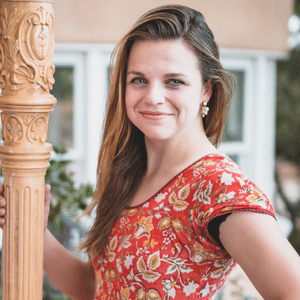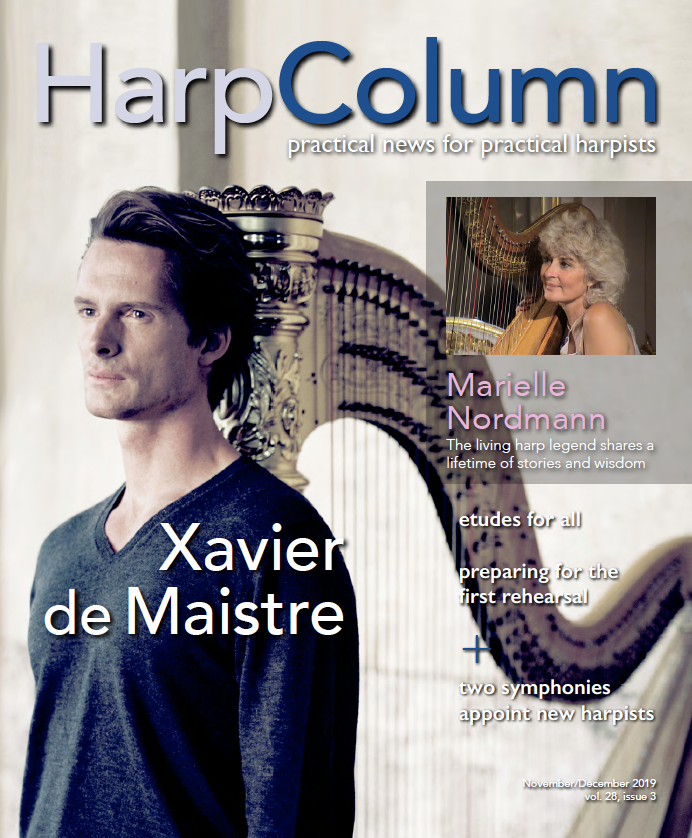—by Grace Browning
Whether you’re the new kid in youth orchestra or you’re stepping into your first day at a new gig, the first rehearsal is always one of the most thrilling and slightly terrifying experiences as a harpist. Unlike other sections in the orchestra who have the luxury of multiple players to one part, the harp is usually solo. To quote Spiderman: “With great power comes great responsibility.” As superhero harpists, it’s our unique responsibility to be 110 percent prepared from the first day so we can contribute our best and focus on the music making. After 20 years of ensemble playing, here’s my fool-proof guide for a knock-out first rehearsal.
1. Grab (the right) part
It may sound obvious, but with multiple editions and online publications floating around, it’s critical to ensure that you have exactly the correct version of the piece on your stand. Touch base with your librarian/gig contact for a copy and you’ll be all set with the same rehearsal numbers, keys, and cuts to avoid any awkward first-day surprises (e.g. “We’re doing Lucia in what key now?!”)
How to score a good score
Petrucci Music Library (imslp.org) is the world’s largest online collection of public domain scores, parts, and recordings available for download or print for free.
Oú est la biblioteque? For more recent works still under copyright protection, you can visit your local public library or check out your local university library. You can also request to borrow a score from your ensemble’s library or just take a quick glance before rehearsal.
Stream your way to the top
Audio: These days, Spotify or Apple Music have recordings of almost anything you’ll ever find on your music stand. For more variety and obscure finds, check out Naxos Music Library (naxosmusiclibrary.com) for a small yearly subscription.
Video: Our good friend YouTube is chock-full of performance videos of varying quality that are fun to play along with. For the creme-de-la-creme of live performances, consider investing in the Berlin Phil Digital Concert Hall or Met Opera on Demand app to stream the world’s best orchestras to your living room.
2. Read, mark, ping
Next up, read through the part and absorb all the yummy details like a detective. Flag the difficult sections, write in/double-check the pedal changes, and consider pinging a trusted colleague for their markings/advice if they’ve played the piece before. Hot tip: Need solid markings in a pinch? Check out the brilliant archived harp parts of Myor Rosen (former principal harpist of NY Philharmonic from 1960–1987) downloadable for free at archives.nyphil.org.
3. Listening with a side of score study
As tempting as it is to hop on the harp and immediately start practicing, hold off until you’ve had a full listen to the piece and followed along with a score. Without knowing the context, tempos, and style of the composition, your part will seem like little more than notes on the page. Enrich your preparation with score study and multiple recordings to experience the piece from the outside in before you dive into the nitty-gritty.
4. Cue the harp
For your next listening adventure, you’ll trade your wide-angle lens for reading glasses as you follow along with the harp part (keeping the score handy for reference). As you count your rests, feel free to conduct along and take pause before each big entrance to write in cues. (See The Keys to Cues sidebar.) Cues are basically obvious little auditory markers (e.g. piccolo entrance, tempo change, cymbal crash) that help us stay on track. Just remember that first rehearsals for an opera or a concerto will usually be orchestra only, so don’t rely exclusively on vocal or soloist cues or you’ll be waiting for a long time.
5. Polish the part
Now that you know the piece from the outside in, prepare your part as you would a solo or an excerpt. Pencil in approximate metronome markings for various sections, but be sure to practice it faster or slower, as you never know how much coffee the conductor will have had before rehearsal! As you experiment with different fingerings, prioritize clarity, sound color, and easy hand-eye logistics to ensure that you keep your eyes on the conductor as much as possible.
6. Play along
For me, it’s this final step that really seals the deal; there’s no better way to get your feet wet than to just dive in and play along with a recording in real time. Like trial by fire, but in the comfort of your practice room, this mock first rehearsal will give you the same musical sensations as the first run-through, while sensitizing you to other voices and helping you connect to your juicy right-brain instincts. If you miss your entrance, no big deal—just rewind and try again!
7. Eyes up, ears open, engage
Now that you’ve read, studied, marked, listened, practiced, and played along, you can smile and rest assured knowing that you’re one of the most prepared sections in the orchestra. Just remember to listen, follow, and watch the conductor like a hawk to ensure you don’t miss a beat. At the end of the day, you’ll fool your colleagues into thinking you’ve played the piece before, because, well, you have! •
Gig Bag Essentials
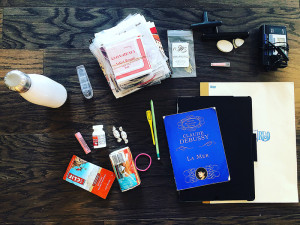
Grace’s gig bag includes: tuning equipment—a. tuner, b. tuning key, c. pick-up microphone (I prefer Peterson’s!) and extra battery; string equipment—d. full set of strings, e. string ends, f. scissors/clippers; music—g. part and h. score (double check that you have all the right ones); miscellaneous—ear plugs, i. highlighter, j. picks, k. pencils, tape, l. iPad; m. door stoppers, n. water bottle, phone charger, o. granola bar, p. Chapstick, q. cough drops, r. Tylenol, s. Kleenex, and t. hair ties.
The Keys to Cues
Not all cues are created equal. Good cues have three components. Cues should be obvious to the ear (e.g. piccolo solo entrance, major tempo change, cymbal crash). Cues should be juicy. Stay locked in by marking cues for your favorite oboe solo or fun percussion part. Cues should be reliable. Remember that the first rehearsal for an opera or a concerto will usually be orchestra only (i.e. missing most of your best cues) so be aware of non-soloist voices and always count regardless. Here are a few of my favorite cues:
Melodic cue
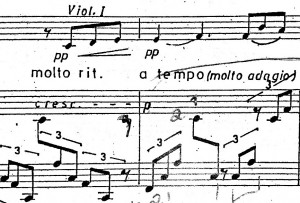
Rhythmic cue
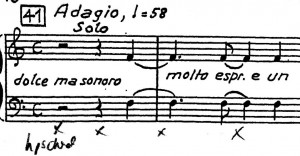
Vocal cue

Wacky instrument cue







